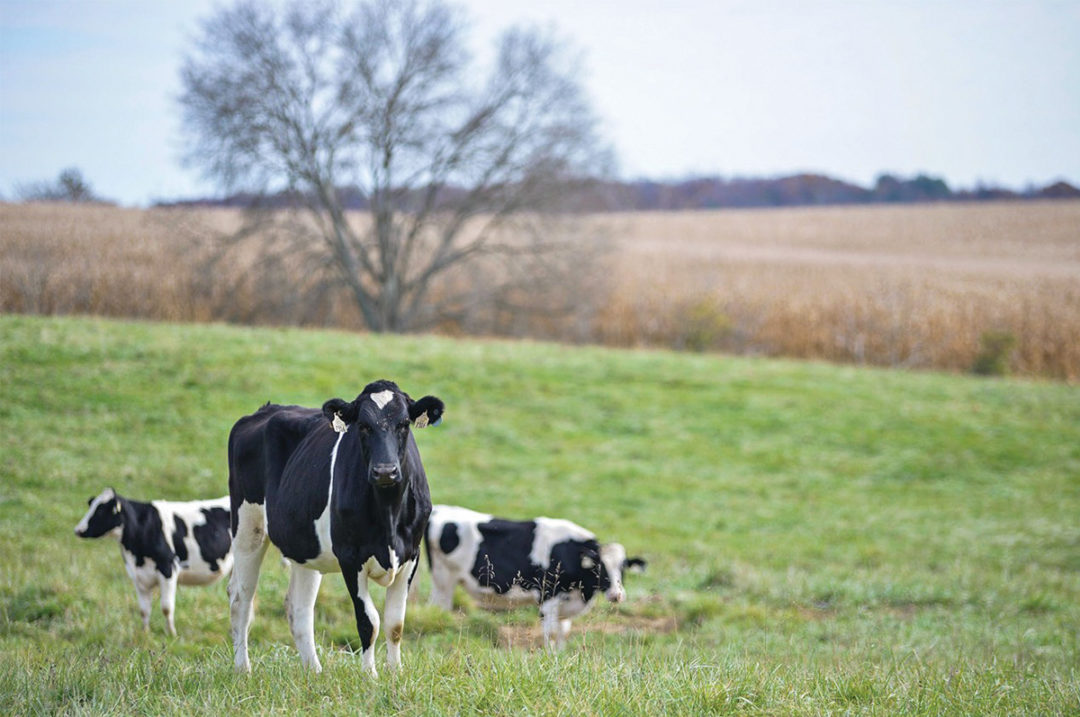To read this article in French, click here.
Most dairy farmers labor under a strict routine they feel comfortable with. This comfort reaches well beyond daily milking parlor tasks and affects cattle breeding programs, likely touching on some variations of heat detection, estrus synchronization, artificial insemination (A.I.) and potentially in vitro fertilization (IVF), followed by embryo transfer (ET).
“IVF helps to shorten and fast forward quality generations,” says Bruno Sanches, Vytelle’s vice president of operations. “Now, if a dairy has only a difference of 20 pounds of milk from the top to the bottom cow, they might not need IVF. But the vast majority of farms have their worst cow far behind their best, not just in milk production. To bridge this gap, operations can select IVF donors not based on milk alone but also on other commercial or financially relevant traits.”
Sanches explains that setting up recipients for ET is simple and fits neatly into these already established and comfortable routines. Making use of IVF recipients is almost the exact process as what many dairies already do with conventional flushing and A.I. Regarding cattle breeding, instead of heat identification and subsequent insemination, the farmer simply waits seven days after the heat identification before making an embryo transfer. Labor requirements and resources including heat checks and the building of nutrition, health and vaccination plans are identical.
He stresses the key factor regarding recipients is always a solid nutritional base, vaccination status and a long-term health strategy, which a farm’s local veterinarian and nutritionist are perfectly positioned to help with.
Sanches says producers have the option to use either fresh or frozen embryos on transplant day. “Although we have slightly better results with fresh, both fresh and frozen embryos are beneficial,” he notes. “Frozen often brings logistics flexibility without disruption to a dairy’s current processes.”
Donor possibilities
Depending upon the service obtained through your local IVF lab, aspiration can be completed on heifers as young as 6 months old, pregnant donors up to 100 days pregnant and freshened females as early as 15 days post-calving.
Sanches points out there’s a substantial opportunity to make use of fresh embryos but also build a frozen bank pointing to a dairy’s continuous breeding program. “Move generations ahead quicker by aspirating all year round to build the bank,” he says. “Transfer fresh in a week after collection or store them in the tank for use at any later time. It’s such a flexible option.”
Donor tips
- Work on building up or maintaining donor nutritional needs early, at least 60 to 90 days prior to oocyte collection. Good nutrition makes good eggs. If nutrition is neglected and body condition is ignored pre-collection, it takes time to make course corrections, and egg quality will suffer.
- Depending on the need and the number of available donors, schedule ovum pick-up (OPU) collections on a weekly or biweekly basis to minimize donor logistics.
- For smaller operations, don’t be afraid to partner with neighbors for a centralized farm egg collection to reduce travel, technician and overhead costs.
Recipient preparations
While top-notch donors are a key part of the ET equation, selecting and preparing high-caliber recipients is just as critical. “At the end of the day, a calf on the ground is the most important part of any program,” Sanches emphasizes. “To help improve the chances of this occurring, exceptional but also prepared recipients are vital.”
Just as donors require proper nutrition and health management, recipients also must be prepared. Body conditions should be assessed at calving to gauge maintenance trends during lactation. Overly thin frames indicate a negative energy balance, which may have an adverse impact on dairy embryo pregnancy rates. Females should be established on a positive plane of nutrition, including complete mineral and vitamin supplementation. This will help reduce irregular estrous cycles and an increased interval to first estrus.
Cattle that are good candidates to be recipients are those comfortable and long term at their home farm, plus at least 45 to 60 days postpartum to allow complete uterine engagement and a continuation of normal estrous cycles prior to synchronization. They should have received pre-breeding vaccinations 30 to 45 days prior to ET to manage reproductive diseases and their effects while enjoying a stable nutrition and diet platform.
“Synchronization for IVF embryos doesn’t change the process for a recipient. A high-quality, prepared recipient is still key,” Sanches says. “I encourage producers to work with their local veterinarian on this segment as they understand the farm, the climate, the location and the special health challenges those cattle face.”
Recipient tips
- Just like donors, recipients need to be in top physical condition to receive an embryo and carry out a successful pregnancy. Placing a valuable embryo into a nutritionally deficient female greatly increases the chance of an unsuccessful transfer.
- Match embryo genetics with suitable high-quality recipients to drive a successful delivery and profitable calf. The ideal dairy recipient is a first-lactating cow or heifer, so selecting the best females to raise valuable embryo calves will generate the greatest results.
- Don’t forget about recipient nutrition after pregnancy is confirmed. As fetal growth increases, rumen capacity decreases. More nutrient-dense rations may be needed to maintain or improve body condition. If necessary, be ready to supplement high-quality forage late in gestation to ensure dry matter intake (DMI) isn’t decreased.
An extension of your reproduction protocol
Sanches explains there are many ways to manipulate the reproductive routine and set up animals to receive natural service, A.I. or ET. Estrus synchronization is commonly used for ET, and with this specific strategy, recipients should be in heat seven to eight days prior to the transfer.
“We understand it took our dairies 20 years to get where they are with their reproductive routines and A.I. protocols,” he emphasizes. “The last thing we want to do is mess with any of it. But we do say, what they’re doing now for A.I. works perfectly for IVF. Only the timing is slightly different.”
When dairies are happy with their A.I. program, their natural heat detection or their synchronization practices, they should continue working with the same protocols when transferring IVF embryos.
“Whatever they’re using today can be worked with when starting an IVF program. Keep using natural heat detection processes if a good number of cows are in heat daily,” he says. “Nothing has to be done differently on that side. IVF is an easy method to implement with whatever is already being done. The same labor, time and care used for A.I. remains constant for IVF.”
Checking pregnancies
Although not new to dairies, Sanches stresses it’s vital they work with their veterinarian to complete a pregnancy check. “It’s important to confirm a pregnancy and track a due date as the timing difference will be 15 to 25 days. With any breeding program, if left untracked, calves could easily go overdue, causing calving stress.”
Working with a veterinarian
To put IVF strategies in motion, very little needs to change for most producers. Selecting elite donors using an operation’s personalized criteria is already a substantial part of top dairies.
Completing high-quality OPU collections is simple without donor preparation. This reduces both manpower and animal stresses.
For the next step, with or without synchronization, Sanches encourages a working relationship with a local, trusted veterinarian. “This is where the rubber meets the road,” he stresses. “Use your trusted vet. After all, most of the time they’re already responsible for the A.I., vaccination protocols, health strategies, synchronization procedures and embryo transfers.”







